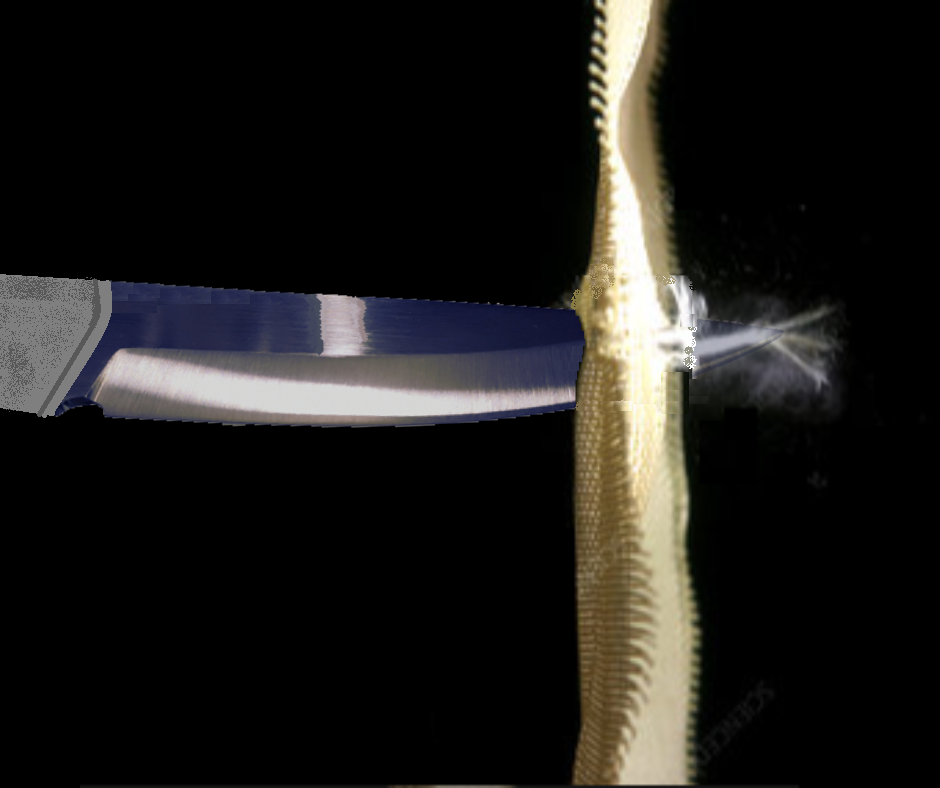Intro.
Just about everyone has heard of Kevlar. We mostly know it as vests worn by military forces, security agents, police, body guards, aerospace. Actually the list of uses is quite vast. In this article I attempt to briefly explore its history and more pertinently “Will it stop the penetration of a Knife Blade”.
History.
Kevlar is quite a remarkable material. It was developed by Dupont in the 1960’s. It’s a synthetic fiber with incredible strength and durability to withstand various attacks on it.
In 1965 a chemist by the name of Stephanie Kwolek was doing research on certain high performance polymers. She was trying to find a good strong lightweight fiber to be used in radial tires. She discovered a unique solution which formed these rigid rod like molecules whilst spinning it. The spinning technique she developed led to the creation of this material which turned out to be 5 times stronger than steel by weight. By 1971 the material we now know as Kevlar was fully developed and introduced to the world. The rest….as they say, is history.
As companies around the world began to use the material they required certain types of material to support specific performance criteria.
- Kevlar 29 – (The original fiber matrix known for its impact resistance, common use is for body armor & helmets)
- Kevlar 49 – (This has really good strength and rigidity, most commonly used in aerospace and rocket motor casings)
- Kevlar 129 – (This variant is very strong but flexible so they use it to reinforce tires and conveyor belts, it can handle a lot of impact, it may suit a situation for protection against *knife attacks)
- Kevlar XP – (This one offers increased ballistic performance and is predominantly used in ballistic vests and helmets)
- Kevlar AP – (Another variant augmented for ballistic protection, designed to minimize the affect of bulging and spreading on the rear of the material. It can also withstand* a certain amount of penetration attempts from a knife)
- Kevlar KM2 – (Specialized for use in marine environments. Used for ropes and cables etc..)

We can clearly see this soldiers camouflage Kevlar Vest

This is a close up of Kevlar material. The stopping affect is achieved by sewing many layers together.
At the moment this article is based on my own research, that is, excluding getting hold of a few pieces of Kevlar and doing in house testing. Note: I will conduct these tests in the future but for now, this is what my research tells me.
Of the 6 main Kevlar products listed above there are two that get a mention more than once when it comes to Kevlar stopping a knife blade. Please be aware that none of them are foolproof in stopping a blade from penetrating this material.
The nature of Kevlar is that it’s made from woven fibers. These fibers have a very high tensile strength which lends itself to resist the stretching and separating of them. The woven material is stitched together in layers, the layers play an important role in slowing the bullet down as it passes through each one. It kind of dissipates the kinetic energy over a small area to finally come to a stop, hopefully before it does the ultimate damage. As such this material is way better at stopping a blunt ballistic object than a knife blade.

*Now, when it comes to Knives it’s a different story. As we know bullets exert a force of a small area but a knife exerts it’s force to a very small area, almost a singular point, where it’s tip is more likely to separate the fibers and pass through them. How far it passes through depends on so many things. The force of the stabbing action, the shape and size of the tip to name a few. A very sharp, hard solid blade could also cut the fibers where a bullet won’t. You can now see that there is no single answer to this question.

So the two that get most mentions for resisting a knife attack is Kevlar XP and Kevlar AP. Kevlar XP is a variant of the original product for enhanced ballistic and cut resistance. Kevlar AP (Advanced Performance) is also a variant developed for certain strength and protective characteristics. NOTE: I reiterate, no-one can guarantee any Kevlar product will stop a knife penetration. Tests suggest that it can have certain penetration resistance affects but depends highly on a number of things already mentioned.
Conclusion.
Whilst Kevlar, in all it’s forms, stands out as the number one product for stopping life threatening gun shots it is limited in it’s effectiveness in it’s ability to stop a knife attack. This is due to many factors like, where the force is concentrated, blade sharpness and motion.
If push comes to shove and I was to walk through a very dangerous area where knife attacks are prevalent I would still rather wear Kevlar than not. It may resist enough of the force of the blade to make good your escape or it may not.
As of March 2024 Kevlar still seems to be the number one product when it comes to an impact resistant, lightweight and flexible self protection material.
As always, happy camping :0)

